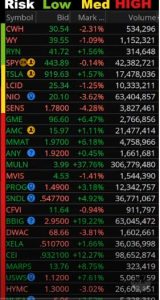 It is not difficult to become an investor. However, it is a good idea to understand some basic points to help you become an investor. Here are four things you need to do in order to become an investor and a successful one at that:
It is not difficult to become an investor. However, it is a good idea to understand some basic points to help you become an investor. Here are four things you need to do in order to become an investor and a successful one at that:
Decide on and articulate your objectives
The number one and most important thing when it comes to becoming an investor is putting into words the reason why you want to move your money into a high potential investment vehicle where it may be at risk.
In order to increase your chances of success, understand why you are investing and acknowledge the fact that your capital can decrease or rise in value depending on how much risk you take. Do you want to invest for retirement? Or your child’s college education?
Determining, articulating and writing down a single overarching investment goal will help you clarify the types of bonds, stocks, exchange-traded funds (ETFs) and other investment options you will invest in.
Identify and research investment candidates
Once you have decided and articulated your objectives, you will find that your objectives will fall into one of the 2 wide categories: income and growth of capital. If you want an appreciation of your money, then it may be a good idea to invest in growth companies.
This is due to the fact that investing in growth companies improves annual revenue faster than the overall market. This can also be said of value stocks which trade at a discount to the overall market yet can rise once the investing herd recognizes their potential.
On the other hand, if your objective is income, then investing in large capitalization blue-chip stocks as they have dividends that generate a good annual yield for investors. Those who are after income can also invest in bonds as bondholders get interested payments on a regular basis.
Just like stocks, bonds can depreciate or appreciate in value. As a beginner, it may be a good idea to research investments in an easy way through sites such as Finance, Yahoo!, and Google Finance.
Invest while committing to a defined holding period
After you have chosen the first holdings in your portfolio, selected a broker and clicked on “buy”, it is time to let your money work for you. Keep in mind that the length of a holding period differentiates an investor from a speculator or trader. You can either invest in the short term or long term.
Short term is when you hold an investment for one year or less and long-term is when you hold your investment for more than one year. Committing to a defined holding period will help you choose an investment that will suit your needs.
Monitor your results and evaluate on a weekly and quarterly basis
Beginners usually find that it is mildly addictive to check their stock prices falling or rising in value change in real time. This is not good as it can lead to impulsive actions that can have serious consequences.
It is usually not a good idea to track your investments on a daily basis except when you want to check on the news for the tickers your own if there’s a need to know event. The best thing to do is to review what happened with your investments on a weekly basis as this will help you make non-impulsive, actionable plans for further research or to tweak positions.
Learn more about investing here: tradingreview.net
 These days, everything costs more. As a result, many people are trying their best to maximize their earnings. One of the best ways to do this would be to find a
These days, everything costs more. As a result, many people are trying their best to maximize their earnings. One of the best ways to do this would be to find a  The
The